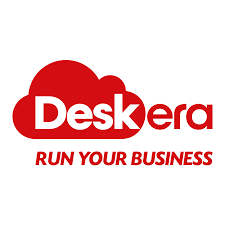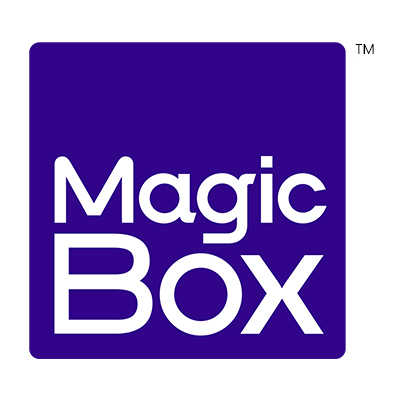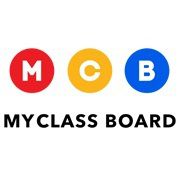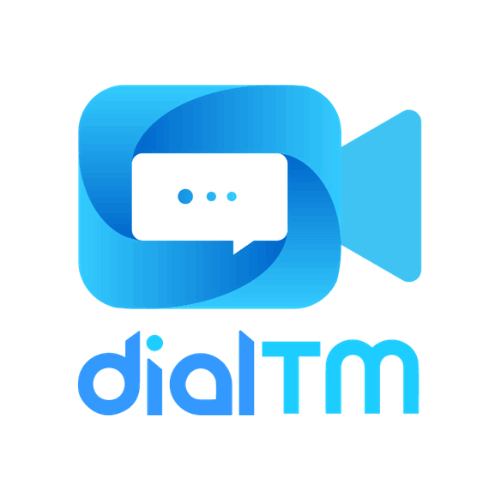List of 20 Best Virtual Classroom Software
Cisco Webex Meetings is a collaboration tool for your business. With cutting-edge capabilities such as video calls, screen sharing, and chat, you can effortlessly connect with your team for increased efficiency. Trusted by 95% of Fortune 500 enterpri...Read More Cisco Webex Meetings
Deskera LMS is a learning management system designed to streamline employee training and development. With its intuitive interface and seamless integration capabilities, Deskera LMS is the ideal solution for businesses looking to enhance skills, trac...Read More Deskera LMS
AppSquadz is a software development company that specializes in creating cutting-edge mobile and web applications. Our comprehensive range of digital solutions spans eLearning platforms, secure video streaming, and robust app security, all designed t...Read More AppSquadz
EduKool Classroom is a online education solution for schools, colleges, institutions, and training centers. With just one click, start your own virtual class in 30 seconds. Our revolutionary platform offers a streamlined 360-degree digital experience...Read More EduKool Classroom
MagicBox Learning is a, advanced digital publishing platform powered by AI, trusted by over 7 million learners worldwide. It caters to K-12 schools and higher education institutions, authors, and content providers, offering a cloud-based solution to...Read More MagicBox Learning
Electa LMS: the interactive teaching solution preferred by many. Our user-friendly platform makes it seamless for you to conduct live online classes, group tutoring sessions, and one-on-one tutoring sessions. Get a taste of the superior features of o...Read More Electa LMS
Adobe Connect – solution for virtual sessions that provides extensive control for a personalized and captivating experience. This powerful platform allows for seamless delivery of compelling training sessions, immersive learning experiences, a...Read More Adobe Connect
BigBlueButton is the top choice for educators seeking a comprehensive virtual classroom solution. Designed with features like multi-user whiteboards, breakout rooms, and live analytics, BigBlueButton fosters interactive and dynamic online learning ex...Read More BigBlueButton
eFront Learning is a software for dynamic learning environments, is solution for your organization. Renowned by industry leaders like Supermacs, Schneider, and Honeywell, eFront delivers exceptional features to enhance employee skills and foster the...Read More eFront Learning
Enrollware is a web-based class registration system that provides superior management and registration features. Its cloud-based training center is available round-the-clock, accessible from any web browser. This highly adaptable and cost-effective s...Read More Enrollware
Learnmagica is a eLearning platform that offers institutions the tools they need to successfully manage online learning. Its intuitive interface allows for easy navigation and simplified course creation, along with efficient student management. Join...Read More Learnmagica
ezeeLEARN is a learning management system that simplifies course development and administration, empowering you to effortlessly deliver online classes. With its comprehensive features, from course creation and assessments to performance analysis, thi...Read More ezeeLEARN
BigMarker is a webinar platform perfect for contemporary meetings and virtual events. Our user-friendly interface provides interactive tools, smooth screen sharing, and recording options to keep you engaged with your participants. Our seamless integr...Read More BigMarker
BrainCert is a E-Learning platform designed for instructors to easily create and promote interactive courses in a thriving marketplace. With powerful features and resources, BrainCert is the perfect solution for enhancing your teaching business and i...Read More BrainCert
WizIQ Virtual Classroom solution for enhancing your online learning journey. Our budget-friendly and intuitive platform ensures hassle-free live classes, course development, and evaluations. Keep your students actively engaged and efficiently manage...Read More WizIQ Virtual Classroom
Classpro is a online teaching solution for coaching institutes. Seamlessly create and monetize courses, collect payments, conduct live lectures, assign tasks, and conduct mock tests, all within your own branded app. Trusted by over 1000 coaching clas...Read More Classpro
Newrow Smart the online learning solution that is transforming the way we educate. Its cutting-edge virtual classroom, flawless video integration, and interactive features provide a dynamic and engaging learning environment for teachers and students...Read More Newrow Smart
LearnCube is a highly trusted virtual classroom platform designed for language teaching. Its reliable audio and video features, along with a customizable online whiteboard, make it a top choice for prestigious educational institutions. This user-frie...Read More LearnCube
MyClassboard is a highly acclaimed school management software used by schools across India and the Middle East. With a track record of 8 successful years, we have set the benchmark for utilizing technology in the education industry. Over 900 schools...Read More MyClassboard
DialTM – solution for video conferencing and secure team collaboration. This software utilizes AES 256 encryption to guarantee private and protected online meetings. With advanced AI technology, DialTM automates attendance and tracks the conce...Read More DialTM
Learn More About Virtual Classroom Software
- What Is Virtual Classroom Software?
- What Are The Recent Trends In Virtual Classroom Software?
- Benefits Of Using Virtual Classroom Software
- Important Factors To Consider While Purchasing Virtual Classroom Software?
- What Are The Key Features To Look For In Virtual Classroom Software?
- Why Do Businesses Need Virtual Classroom Software?
- How Much Time Is Required To Implement Virtual Classroom Software?
- What Is The Level Of Customization Available In Virtual Classroom Software?
- Which Industries Can Benefit The Most From Virtual Classroom Software?
- Conclusion
What Is Virtual Classroom Software?
Virtual classroom software is a comprehensive digital platform that supports online learning and teaching. It provides a virtual environment in which teachers and students can engage and conduct live classes, discussions, and activities from anywhere, independent of physical location. This unique technology simulates a traditional classroom setting by combining numerous communication and collaboration tools such as video conferencing, real-time messaging, screen sharing, and interactive whiteboards.
It also includes facilities for recording and playback, automated attendance tracking, and assessment tools to improve the learning experience. Virtual classroom software is extremely customizable, allowing instructors to create their own curriculum and use multimedia to engage students. It also provides the freedom to hold sessions at any time, making it suitable for students with varying schedules and time zones.
Furthermore, virtual classroom software encourages student interaction with features such as polls, quizzes, and breakout rooms for group activities. It also supports real-time feedback and Q&A sessions, making it easier for teachers to monitor student progress and handle any issues. In today's digital age, virtual classroom software is a crucial tool for online education, corporate training, and hybrid learning models.
With its easy-to-use interface and seamless connection with learning management systems, it provides a convenient and efficient remote learning solution. Investing in virtual classroom software may provide a dynamic and engaging learning environment for students while also streamlining the teaching experience for teachers.
What Are The Recent Trends In Virtual Classroom Software?
The widespread transition to remote learning has resulted in a significant increase in demand for virtual classroom software in recent years. As the education sector rapidly embraces technology, there have been several notable trends in virtual classroom software. One of the most notable trends is the incorporation of artificial intelligence (AI) and machine learning (ML) capabilities into virtual classroom software.
These technologies are being utilised to improve the overall learning experience by tailoring it to each individual student. AI and machine learning also provide data-driven insights, allowing teachers to tailor lesson plans and assignments to students' strengths and weaknesses. Another trend in virtual classroom software is the inclusion of interactive elements.
With students unable to physically interact with the information, virtual classroom software must deliver compelling and dynamic learning opportunities. This includes features like virtual whiteboards, polls, quizzes, and group activities that keep students engaged in the sessions. Furthermore, the popularity of mobile learning has influenced virtual classroom software trends.
Given that the majority of students own smartphones and tablets, virtual classroom software must be mobile-friendly. This enables students to learn from anywhere and at any time, making education more flexible and accessible. Furthermore, virtual classroom software has undergone a shift towards gamification and immersive learning experiences. Virtual classroom software enhances the learning experience by incorporating gaming features and virtual reality technologies. This tendency is especially advantageous for younger pupils, who prefer interactive and engaging learning techniques.
Benefits Of Using Virtual Classroom Software
Virtual classroom software is a strong tool that has grown in prominence in recent years, especially with the ongoing COVID-19 epidemic. This program enables teachers and students to connect and interact in a virtual learning environment that simulates the traditional classroom experience via a computer or mobile device. Virtual classroom software provides several benefits to both teachers and students.
Let's take a deeper look at some of the important features that make this program an asset to any educational institution.
1. Flexibility And Convenience: Virtual classroom software allows students to learn from anywhere and at any time. They can access course materials, engage in classes, and collaborate with classmates and teachers without having to physically be in a classroom. This convenience makes it suitable for students with hectic schedules or who are unable to attend regular sessions due to personal or geographical constraints.
2. Cost-Effective: Using virtual classroom software can drastically lower the cost of schooling. It reduces costs associated with physical classrooms, such as transportation, lodging, and upkeep, making it a more affordable choice for both educational institutions and students.
3. Enhanced Learning Experience: Virtual classroom software provides teachers with a variety of interactive tools and features to engage and captivate students, including virtual whiteboards, live chats, and breakout rooms. These technologies make the learning process more dynamic and interesting, resulting in improved retention and understanding of the course material.
4. Increased Accessibility: One of the most significant advantages of virtual classroom software is its capacity to make education available to a wider range of people. This program now allows those with physical disabilities, those living in remote places, and those who are unable to attend traditional classes for a variety of reasons to receive a decent education.
5. Real-Time Feedback And Assessment: With virtual classroom software, teachers may provide students real-time feedback and measure their progress quickly. This tool enables students to track their performance and discover areas for growth, allowing them to fulfil their learning objectives more effectively.
Important Factors To Consider While Purchasing Virtual Classroom Software?
When it comes to choosing virtual classroom software, there are numerous key elements to consider to ensure you select the best option for your unique requirements. As a buyer, you must properly investigate and evaluate these issues before making a selection.
Here are the main elements to bear in mind.
1. Features And Functionality: The virtual classroom software's features and functionality are the most important factors to examine. It should have all of the tools and features required to improve the learning experience, such as screen sharing, whiteboards, interactive polls, breakout rooms, and recording capabilities. Additionally, the software should be user-friendly and simple to operate for both students and instructors.
2. Compatibility: Before making a purchase, make sure that the virtual classroom software works with your current devices and operating systems. This eliminates technical obstacles and ensures a smooth and seamless virtual learning experience.
3. Scalability And Customisation: Another important consideration is the software's scalability and customisation capabilities. As your virtual classroom expands, you may need to add more students or teachers, and the software should be able to handle these changes without issue. Similarly, it should include customisation possibilities for personalising the virtual classroom based on your branding and special requirements.
4. Security And Privacy: As online learning has grown in popularity, security and privacy concerns have become increasingly important. To secure the safety of your kids' information, use virtual classroom software that includes powerful security features like end-to-end encryption, access controls, and data protection.
5. Technical Support And Training: Virtual classroom software is sophisticated, and technical faults can develop at any time. As a result, it is critical to select software that provides dependable technical support and training to aid you in the event of a problem or to learn how to use the software properly.
6. Pricing: Finally, pricing is an important issue to consider when selecting virtual classroom software. While it may be tempting to go for a low-cost alternative, it is critical to evaluate the features and capabilities you require and select software that provides the most value for your money.
What Are The Key Features To Look For In Virtual Classroom Software?
When choosing virtual classroom software, look for crucial features that will improve the overall learning experience for students while streamlining the teaching process for instructors. These features have a significant impact on the software's effectiveness and performance.
Here are the top characteristics you should look for in virtual classroom software.
1. Interactive Tools: A virtual classroom should have a variety of interactive tools like as whiteboards, screen sharing, polls, and breakout rooms to interest students and enable collaboration.
2. Audio And Video Conferencing: The software should support high-quality audio and video to ensure smooth and clear communication between the instructor and the students.
3. Recording And Playback: The ability to record lectures and classes enables students to examine content at their own pace and facilitates remote learning. Look for software with simple playback and download options.
4. Mobile Accessibility: In today's environment, mobile devices are commonly used to learn. To ensure accessibility for all students, use software that is compatible with a variety of devices and operating systems.
5. Virtual Assessment And Grading: The program should have virtual assessment and grading options to help track student progress and provide appropriate feedback.
6. Customisation: Customisable elements like branding, layout, and access options allow you to personalise the software to your institution's exact requirements.
7. Integration With Learning Management Systems (LMS): Integrating with an existing LMS simplifies the process for both instructors and students, providing simple access to course content and grades.
8. Security And Privacy: The software should include strong security features to protect the privacy and data of both students and teachers.
9. Cost-Effective: Take into account the software's cost as well as any additional expenditures, such as license or maintenance. Look for software that is reasonably priced and provides good value for money.
10. Customer Support: Select a software provider that provides dependable, responsive customer service to address any technical issues or questions that may emerge.
Why Do Businesses Need Virtual Classroom Software?
Businesses in today's fast-paced, linked world are always looking for ways to better their operations and remain ahead of the competition. Employee training and development has been an increasingly important part in recent years. Traditional techniques of in-person training have become increasingly difficult in the age of remote work and global teams.
Here is where virtual classroom software comes in handy. Virtual classroom software is a digital platform that enables businesses to provide live and interactive training sessions, workshops, and presentations to their employees regardless of location. This program has a variety of capabilities, including video conferencing, screen sharing, and interactive whiteboards, that improve the learning experience and bridge the gap between physical and distant learners.
One of the key reasons why businesses require virtual classroom software is the flexibility it provides. With remote work becoming the new normal and a distributed workforce on the rise, there has never been a bigger demand for a flexible and accessible training solution. Virtual classroom software enables firms to contact employees in different time zones, perform on-demand training sessions, and even offer self-paced learning alternatives.
Furthermore, virtual classroom software is an affordable choice for enterprises. It eliminates the need for costly travel and lodging expenses associated with traditional training techniques. It also saves money on supplies and facilities because everything is done online. Aside from affordability and flexibility, virtual classroom software allows organisations to monitor the growth of their personnel.
Businesses can use this software to generate data on attendance, participation, and performance, allowing them to evaluate the effectiveness of their training programs and make required adjustments. The usage of virtual classroom software encourages a collaborative learning environment. Breakout rooms, virtual whiteboards, and chat functions allow employees to communicate with one another and collaborate on projects and assignments, building a sense of teamwork and camaraderie.
Finally, virtual classroom software is very scalable, making it appropriate for enterprises of any size. Whether it's a small startup or a major international organisation, this software can handle a large number of participants while providing a flawless learning experience.
How Much Time Is Required To Implement Virtual Classroom Software?
The time required to establish virtual classroom software varies according to the product and the organization's demands. The implementation procedure can last anything from a few weeks to many months. First, analyse the sort of virtual classroom software being used. Some software may take more setup time and expert assistance, but others may have a more user-friendly interface and be easier to set up.
The size and complexity of the organisation can also influence implementation time. Larger organisations with various departments and a larger user base may need more time to guarantee that the software is correctly integrated and that everyone understands how to use it efficiently. The amount of customisation and training required might also impact implementation time.
If the program needs to be extensively customised to meet the specific demands of the organisation, implementation may take longer. Similarly, if the software requires extensive training for users, it may take longer for everyone to become acquainted with the platform. Additionally, the software provider's availability and response can have an impact on installation time.
A provider who is responsive and helpful with technical support and training might help speed up the implementation process. Overall, organisations must carefully assess their requirements and the capabilities of the virtual classroom software before commencing the installation process. Taking the time to thoroughly assess and plan can assist guarantee that the implementation runs smoothly and efficiently.
What Is The Level Of Customization Available In Virtual Classroom Software?
The extent of customisation in virtual classroom software varies according to the platform and supplier. However, most virtual classroom software provides a variety of customisation options for tailoring the experience to your exact requirements. One of the primary customisation possibilities is to brand the virtual classroom with your organization's logo and colour scheme.
This promotes a more professional and unified learning atmosphere for your kids. In addition, some virtual classroom software allows you to customise the layout and design to suit your preferred teaching style. Another key component of customisation is the ability to tailor the content and materials used in the virtual classroom. You can submit your own presentations, films, and interactive activities, as well as create custom quizzes and assessments.
Furthermore, many virtual classroom software alternatives include capabilities that enable personalised communication and collaboration between students and teachers. This may include private messaging, discussion boards, and group activities. Some virtual classroom software also allows for language customisation, enabling multilingual support and localisation for international users.
Overall, the level of customisation possible in virtual classroom software can assist in creating a unique and individualised learning experience for both students and teachers. When selecting virtual classroom software, make sure to ask about the specific customization possibilities available from the vendor to ensure it meets your needs and goals.
Which Industries Can Benefit The Most From Virtual Classroom Software?
Virtual classroom software has transformed how businesses and educational institutions deliver training and learning programs. With its extensive features and interactive tools, virtual classroom software makes it easy to connect and engage with participants from all over the world, making it an invaluable tool for a variety of sectors.
The following industries can gain the most from deploying virtual classroom software:
1. Education: Virtual classroom software is a big changer in the education market. It enables teachers to deliver live lessons, distribute study materials, and communicate with students in real time. This removes the obstacles of travel and time, making it easier for students to obtain a great education.
2. Corporate Training: Virtual classroom software is an excellent resource for corporate training. It enables organizations to conduct remote training sessions for their staff, lowering expenses and enhancing efficiency. Virtual classroom software, which includes features such as screen sharing and interactive whiteboards, makes training sessions more interactive and engaging.
3. The Healthcare Business: can also profit from virtual classroom software. It enables medical professionals to deliver online training programs and workshops to nurses, doctors, and other workers. This helps them improve their skills and keep up with the latest medical developments.
4. IT Sector: Virtual classroom software is a useful tool in the IT sector. It allows remote teams to collaborate and work on projects regardless of their geographical location. It also enables IT professionals to join virtual conferences and workshops to improve their technical knowledge.
5. Government Agencies: Virtual classroom software can also be useful for government organisations. It enables them to train their personnel and communicate with residents via virtual meetings and webinars.
Conclusion
To summarise, virtual classroom software is an effective tool for improving the learning experience in a digital context. It offers a variety of capabilities, including real-time communication, interactive collaboration, and advanced learning management systems. Using the appropriate virtual classroom software, educators may provide entertaining and effective classes, while students can actively participate and receive personalised teaching.
When selecting virtual classroom software, it is critical to compare the features, pricing, and customer service provided by different suppliers. Key considerations include ease of use, scalability, and compatibility with various devices and operating systems. Additionally, it is critical to evaluate the software's security procedures and data privacy policies to ensure the protection of students' personal information.
As technology advances, virtual classroom software becomes more popular and vital in the education industry. It provides greater flexibility, convenience, and cost-effectiveness than traditional classroom environments. Virtual classroom software, with its user-friendly interface and comprehensive capabilities, can accommodate a wide range of teaching approaches, allowing educators to create a dynamic and engaging learning environment.
In conclusion, selecting the appropriate virtual classroom software is critical for addressing the demands of both instructors and students in a fast-paced, ever-changing digital world. We hope this buyer's guide has given you useful information and thoughts to assist you make an informed selection. Remember to conduct extensive research and compare many possibilities before deciding on the best virtual classroom software for your educational institution or organization.






















